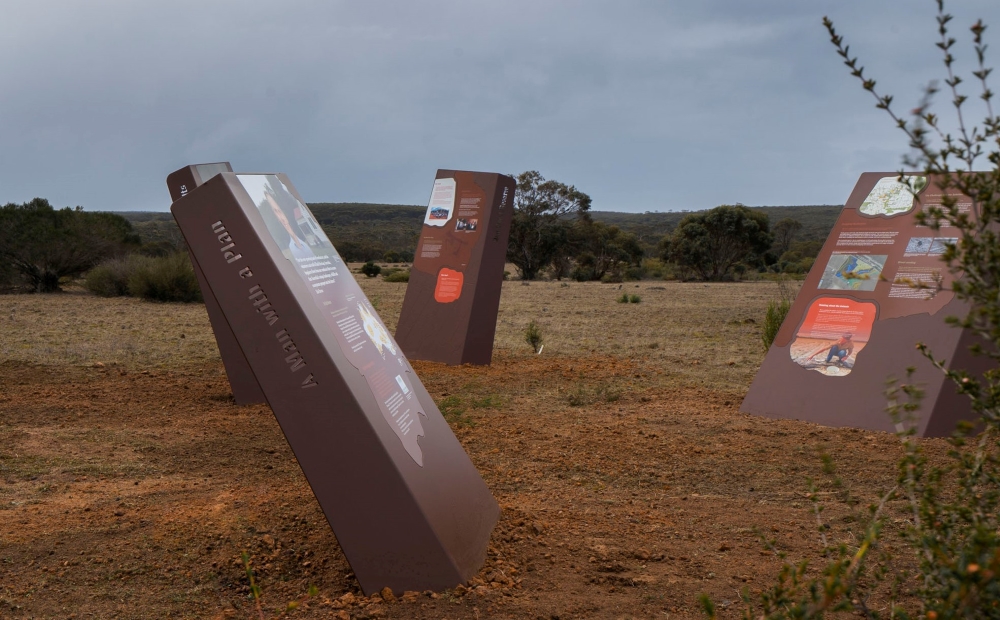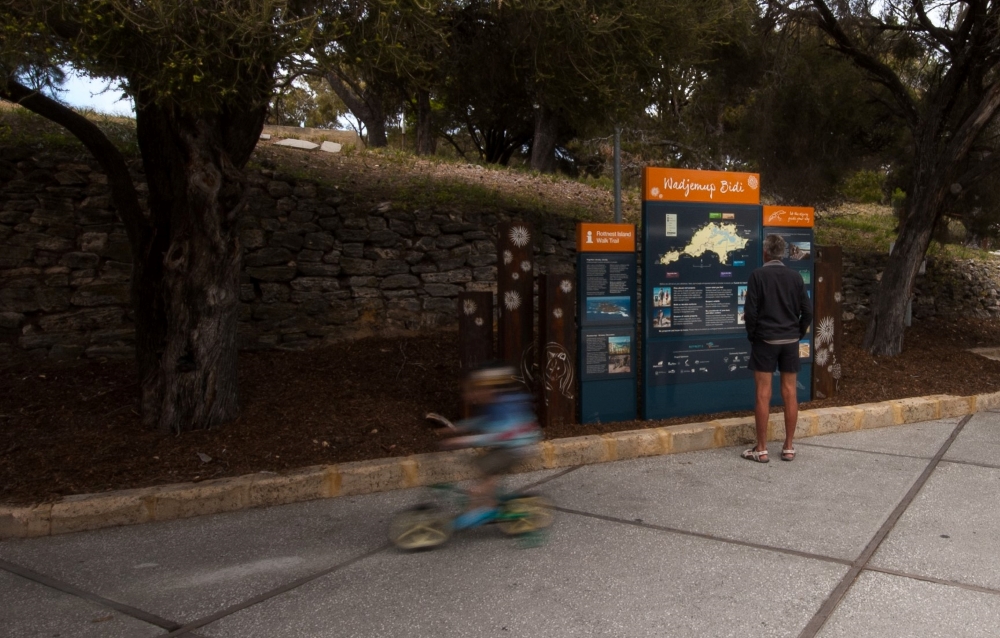
There are several other types of signs you may see in your travels. You have likely encountered some signs that use interpretive design. These signs are not intended to get you from one place to another. An interpretive design sign is building a way for you to understand an area and tell the story of the place you are visiting.
What is Interpretive Design?
While you may have heard the term interpretive design, there is a fair chance you do not know what it means. At its essence, interpretive design is storytelling and also story-making. It does more than share information. It deepens people’s understanding of places and has an impactful relationship with areas where it is used. It is frequently the factor that links a place with its history and the stories that took place in that location.
Interpretive design helps people explore the familiar and the novel in a new light. It uses several different elements to achieve this, including:
- Evidence
- Facts
- Knowledge
- Understanding
Three Examples of Places Interpretive Design are Used
- A botanical garden with signs featuring a brief history of the area, explanations regarding indigenous species, and identification of the plants and wildlife found in the garden
- A historical site walking visitors through the timeline of when the area was first settled, through milestones and moments of change. Alternatively, displays that take visitors through day-to-day life in the location.
- Museums are ideal locations for the use of interpretive design signage. Whether you have sculptures, artifacts, or pop culture icons, these designs can enhance a visitor’s understanding of and connection to the subject matter.
Why is Interpretive Design Important?
The interpretive design gives life to the subject matter and creates a connection between visitors and the site they are visiting. It turns observation into interaction on a mental and emotional level. Additionally, users have more memorable experiences when encountering interpretive designs.
Whether it is feeling joyful anticipation of recreated dance ceremonies or the shock of being up close to a crocodile after reading how much power is in his jaws, successful interpretive designs help visitors feel, experience, and remember something.
Imagine being at a recreation of a historic area. You may be impressed with the buildings and models you see, but walking past them does not spark your interest or make you feel connected.
If the same site offered explanatory signs, perhaps with interactive capabilities, you would have a better idea of how the original people felt. Understanding their fear or excitement allows you to form a connection and possibly empathise with the group who inhabited the area centuries ago. Additionally, you could develop a new respect for the culture or an opinion on the necessity of preserving and restoring historical sites.
The interpretive design does not tell an observer how they should feel. The beauty of this method of sharing information is that it illuminates facts while allowing those who see the designs to form their conclusions. A months-long voyage from the other side of the world may sound exciting to one person and dreadful to another. It is based on how they interpret the material.
What Forms are Considered Interpretive Design?
While signs are often used, many forms of interpretive design fit into diverse areas. These types include:
- Dramatisations and re-enactment
- Exhibitions
- Interactive installations
- Mobile phone apps
- Public artwork
- Signage
- Soundscapes
- Stationary displays
- Support publications
- Tours
- Trail development
- Verbal storytelling
Who Can Interpretive Design Help?
There is a strong psychological side to interpretive design. While the designs do not overtly tell viewers how to feel or what to think about the subject matter, they can convincingly make a case for actions or feelings.
The broadening of thoughts and sparking of ideas can stem from encountering interpretive design. The design helps those who see it develop a greater understanding, appreciation, or respect for the object, culture, or animal they see. If people walk away from viewing this form of design changed or enlightened in some way, the interpretive design was well-done.
History, culture, and ecology receive help through interpretive design. Stereotypes and inaccuracies can be corrected through interpretive design by allowing the viewer to experience the truth behind legends or fables.
Interpretive design that is detailed, authentic, and interactive elicits a stronger viewer connection. Because the design work is aimed at a specific audience, its impact can bring actions that favour the cause involved. Additionally, the businesses or organisations behind the interpretive design also stand to gain from it.
For example, a zoological park has many visitors who are children. If interpretive designs show images of how damaging rainforests hurt inhabitants, the children can change their thinking and make conservation a goal. Additionally, they can encourage the adults in their lives to use resources wisely or donate to the zoo’s preservation fund.
What Businesses or Organisations Can Benefit from Interpretive Design?
Because interpretive design is very impactful, it influences opinions, thoughts, and decisions. This opens the door for nearly any business or organisation that draws visitors to use interpretive design to advance their cause.
This applies to philanthropic causes, historical societies, and other conservation groups. It is also true for businesses that specialise in merchandise with interesting backstories.
Top Mistakes in Interpretive Design
For the best results in interpretive design, avoid these mistakes.
- Too much information on one display is a common issue for those creating interpretive designs. Remember, the audience may be standing in a line with little time to read a chunk of text.
- Overuse of technical or profession-based terms can make your signage challenging to understand. Often people will see technical terms without explanation and skip the sign altogether.
- Unfinished narratives cause a great deal of frustration to visitors following a series of signs that divulge a small bit of information at a time. A sudden stop without a definitive end to a story or timeline is unfair.
Interpretive design is complex yet essential in signage. It can illuminate concepts, forge connections, and inspire thoughts when done correctly. If you believe your company can benefit from the interpretive design but lack the time or the staff necessary, reach out to us at Publik. Our experienced team of professionals will create the perfect interpretive design for your company.


